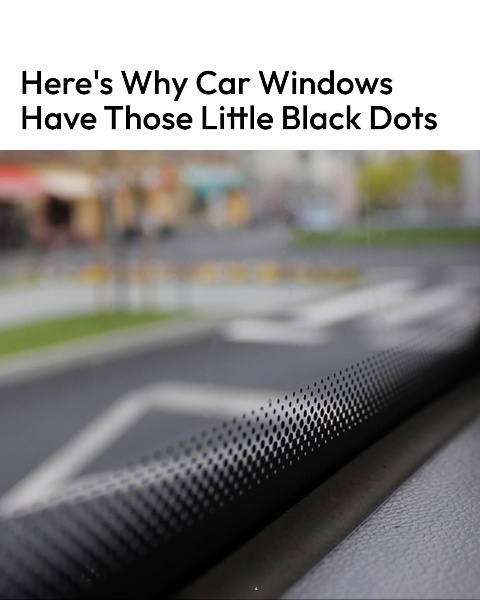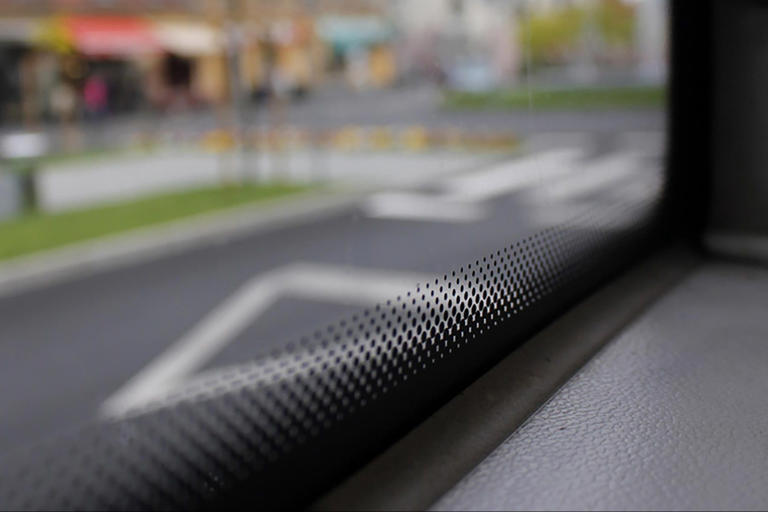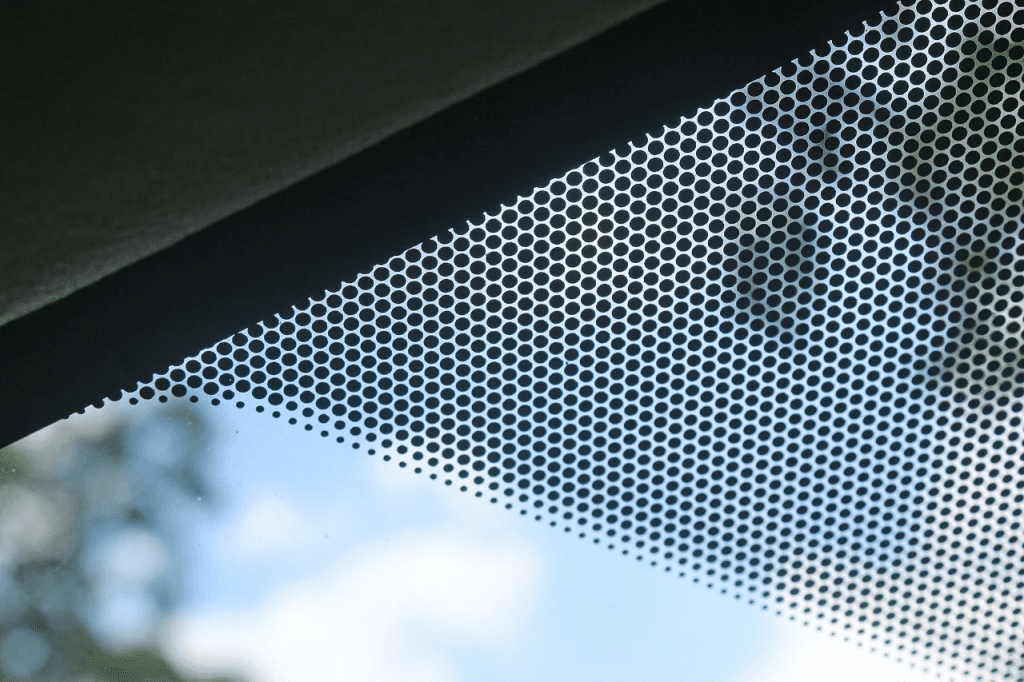If you’ve ever glanced at your windshield and noticed those tiny black dots scattered along the edges, you’re not alone. While they might look decorative or insignificant, they actually serve important functions. Many drivers have speculated that these dots are part of a radio antenna or help with defrosting the windshield—but the truth is much more fascinating. Let’s break down what these black dots really do and why they’re there.

The Role of the Frit: More Than Just a Design Element
Before we dive into the dots, it’s essential to understand the solid black band that borders the windshield. This is called a “frit,” and it plays a crucial role in keeping your windshield secure.
- Strong Adhesion: The frit is made from ceramic enamel paint that’s baked into the glass, creating a rough surface that helps the adhesive bond the windshield to the car’s frame. Without this strong grip, the glass wouldn’t stay in place securely.
- UV Protection: The frit also blocks harmful UV rays from degrading the adhesive. Over time, exposure to sunlight can weaken the bond, which could make the windshield less secure.
- Aesthetic Purposes: The black band conceals the adhesive, making the windshield look more polished and seamless. Without it, you’d see a messy line of glue along the edges of the glass.
What Do the Black Dots on the Windshield Do?
Now that we understand the frit, let’s talk about the dots. These small circles are not randomly placed—they are designed to serve multiple functions:
- Temperature Control: When glass is heated during the manufacturing process, the black frit absorbs heat faster than the rest of the windshield. This can create temperature differences that may cause warping. The dots help gradually transition the heat, preventing uneven expansion and ensuring structural integrity.
- Sun Glare Reduction: The dots act as a gradient between the solid black frit and the clear glass, helping to soften the brightness of incoming sunlight. This makes the transition easier on the eyes and reduces distractions for the driver.
- Improved Aesthetics: Rather than an abrupt shift from black to clear glass, the halftone pattern of dots creates a more visually appealing transition, blending the windshield elements smoothly.

Why Do Some Cars Have More Dots Than Others?
Not all windshields look the same, and some vehicles have more pronounced dot patterns than others. The placement and density of these dots depend on several factors:
- Manufacturing Differences: Some auto manufacturers use a heavier dot pattern to provide better temperature control and UV protection.
- Windshield Size and Shape: Larger, curved windshields often have more dots to manage the distribution of heat more effectively.
- Design Aesthetics: Some manufacturers opt for more prominent dot patterns simply for visual consistency across their vehicle lineup.
Can the Black Dots on the Windshield Wear Off?
Yes, over time, the black dots can start to fade or wear off. This can happen due to prolonged exposure to harsh sunlight, excessive cleaning with abrasive materials, or general wear and tear. When this occurs, it can expose the adhesive beneath the frit, making it more susceptible to UV damage and weakening the windshield’s bond to the car.
If you notice the dots fading or peeling, it’s a good idea to have your windshield inspected by a professional. In some cases, a simple repair might be possible, but if the adhesive has started to deteriorate, a full windshield replacement may be necessary.

Do All Cars Have Black Dots on the Windshield?
Most modern cars feature these black dots as part of their windshield design. The use of frits and dot patterns has become an industry standard because of their functional benefits. However, if you own a vintage or classic car, you may notice that older models relied on different windshield-securing methods, such as gaskets and metal trim, rather than ceramic frits and adhesives.
Final Thoughts
The next time you look at your windshield, you’ll know those black dots aren’t just there for decoration. They play a vital role in temperature control, UV protection, and structural integrity. While they may seem like a minor detail, they contribute to the overall safety and efficiency of your vehicle. Keeping an eye on their condition ensures your windshield remains in top shape, providing you with clear visibility and a secure ride.